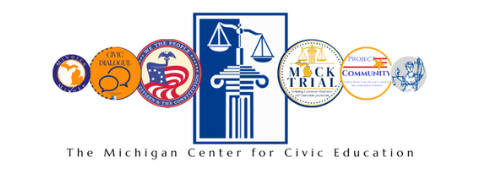American colonists had some strong ideas about what they wanted in a government. These ideas surface in colonial documents, and eventually became a part of the founding documents like the Declaration of Independence and Constitution. But where did they come from? This lesson looks at the Magna Carta, Mayflower Compact, English Bill of Rights, Cato’s Letters and Common Sense.
Civics Lessons
Colonial Influences
Making Decisions: by Group: The Jury System
Students learn about the nation’s jury system and its importance to the rule of law in the United States. Students will experience the Sixth and Seventh Amendments at work as they engage in the main lesson activities, including one in which they will serve as jurors.
A Visitor from Outer Space
Students learn about the Bill of Rights and the Importance of Rights
I Can’t Wear What??
Students meet Ben Brewer and find out what happened the day he decided to wear his favorite band t-shirt to school in violation of a new dress code rule. Students read a summary of a Supreme Court case to figure out the “rule” that applies to Ben’s problem. This lesson lays the groundwork for students to write two short persuasive essays—one arguing each side of the issue.
Connecting the Separate Powers
In this lesson, students will gain an understanding of the separation of powers using role playing and discussion. Students will identify which parts of the Constitution provide for the branches of our government, and will categorize public officials into one of these three branches.
What Basic Ideas About Government Are included in the Preamble to the Constitution?
This lesson explores some ideas in the Preamble to the Constitution. Students learn that the power to govern belongs to the people who have created the government to protect their rights and promote their welfare.
Voting and the Constitution
Students will learn about the Constitution’s many provisions for voting, including how votes affect the makeup of the government and its branches. The lesson and lesson extensions will have students engage in activities and participate in discussions about how officials are chosen in the three branches of government and how the election process includes the Electoral College.
Who can Vote for Student Council President?
Students review hypothetical scenarios and decide who may vote for student council president. Students review constitutional principles states must follow when deciding who can vote.
What is Democracy?
In this lesson, students will identify essential components of a functioning democracy. They will be presented with “borderline” countries – hypothetical nations that exhibit some, but not all, of the characteristics of a democracy. Through discussion and group work, students will expand their understanding of democracy and see different manifestations of democratic practices.
What Makes an Amendment?
Students will learn about the process of amending the Constitution. They will review the details of the amendment process and discuss its pros and cons. In class activities, assignments, and the Lesson Extensions, student partners and groups will create persuasive presentations that they will share with the class to gain support for an amendment.

